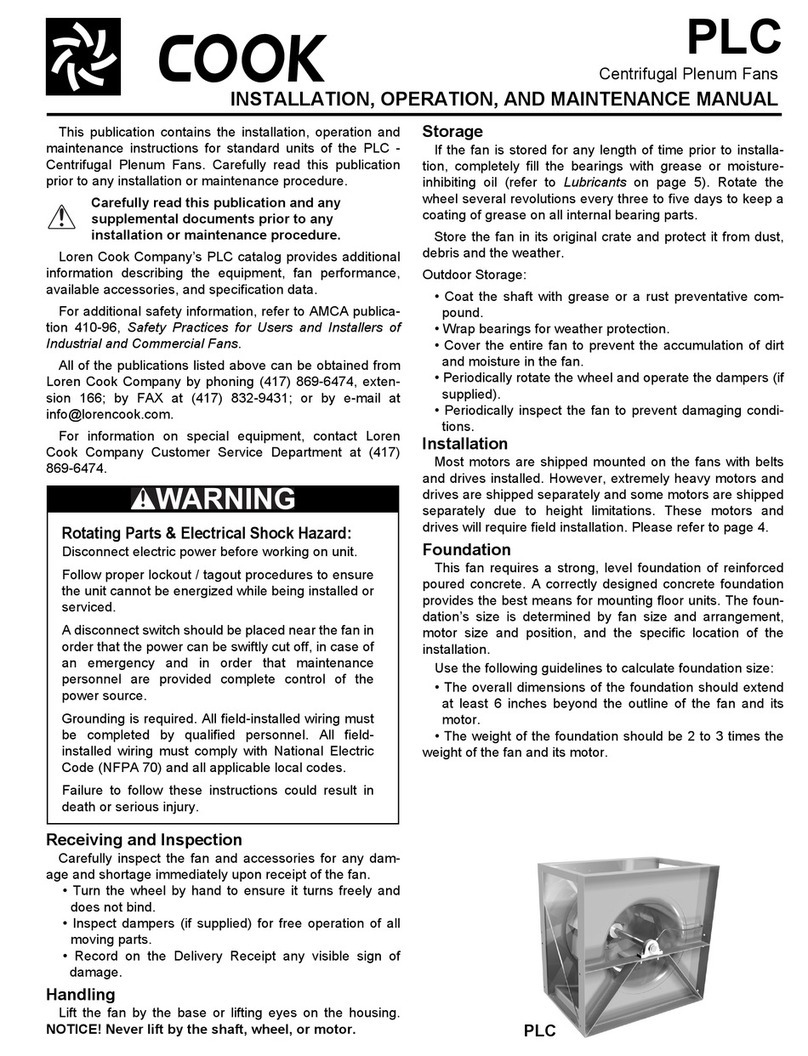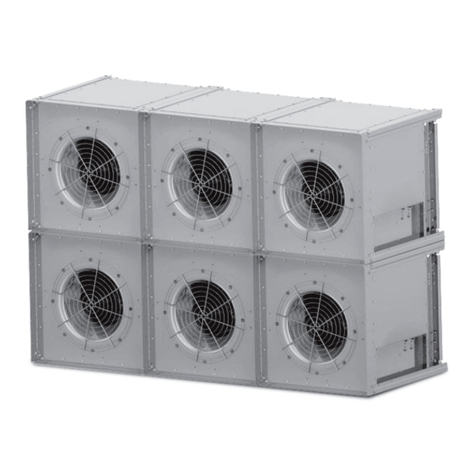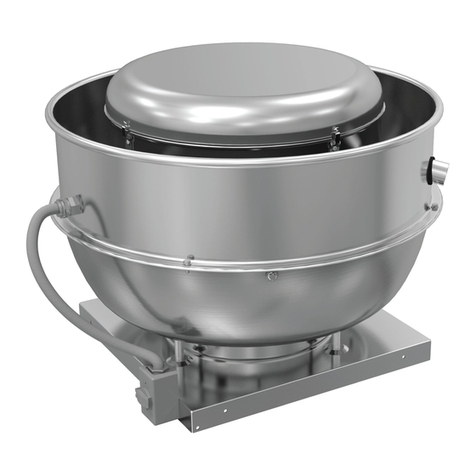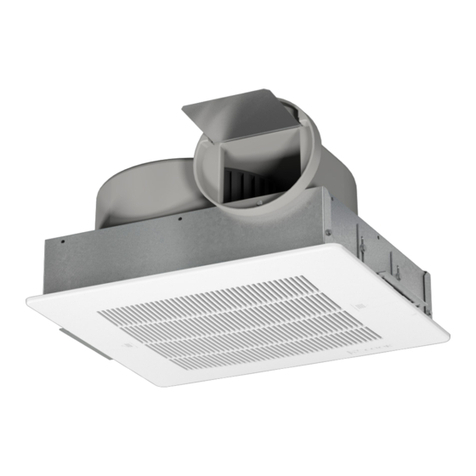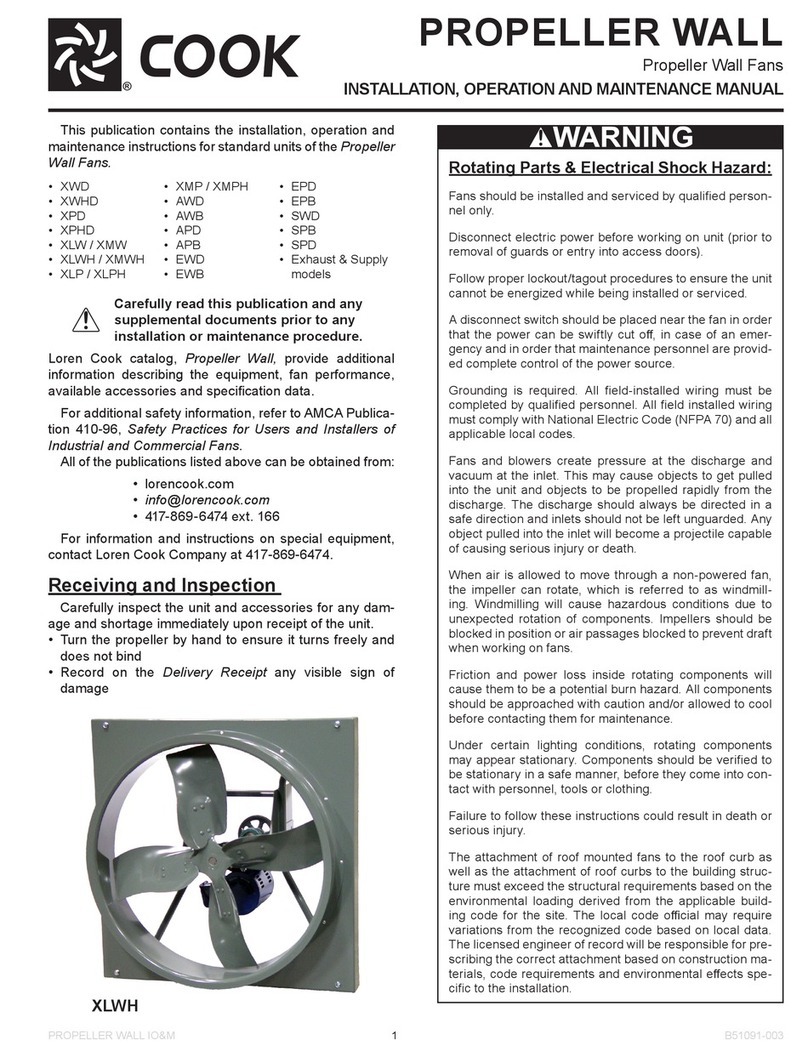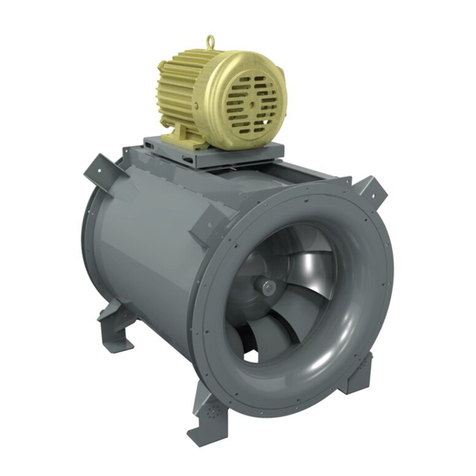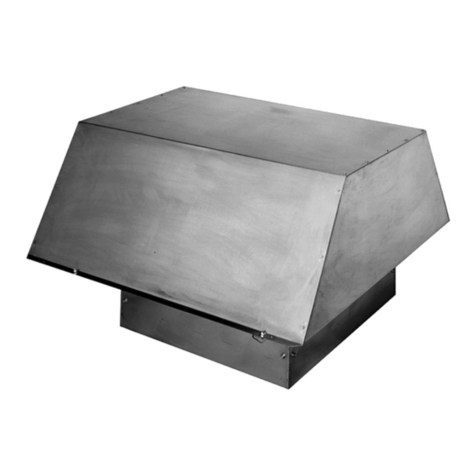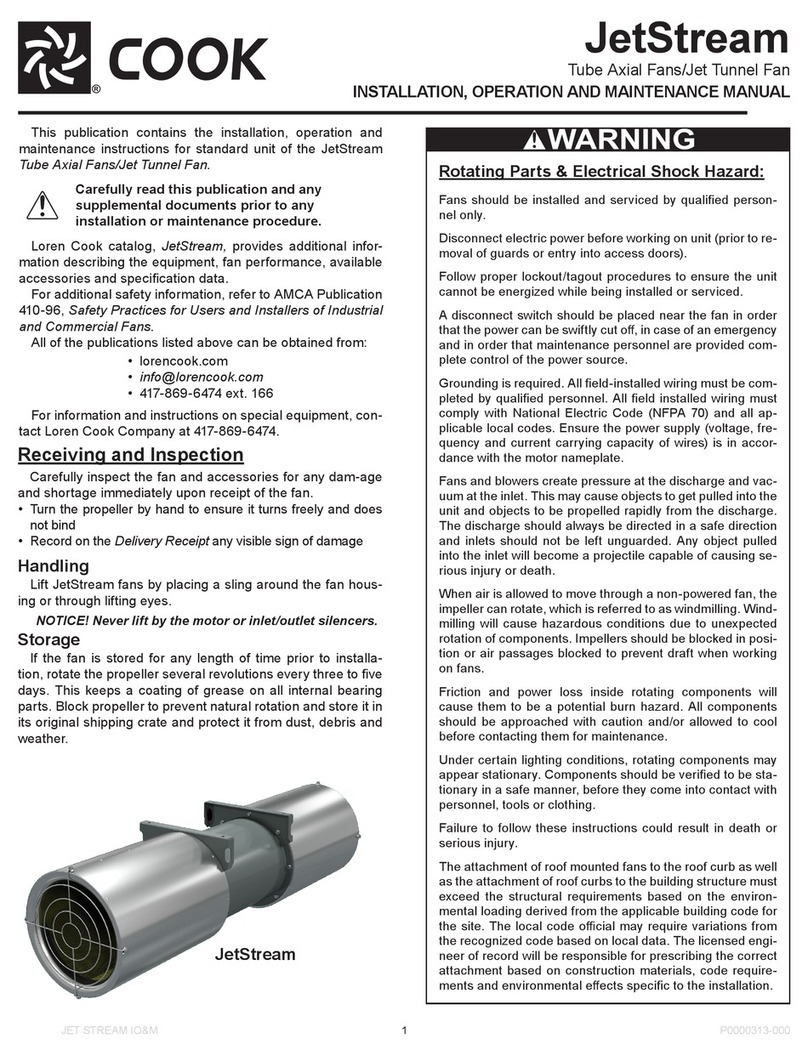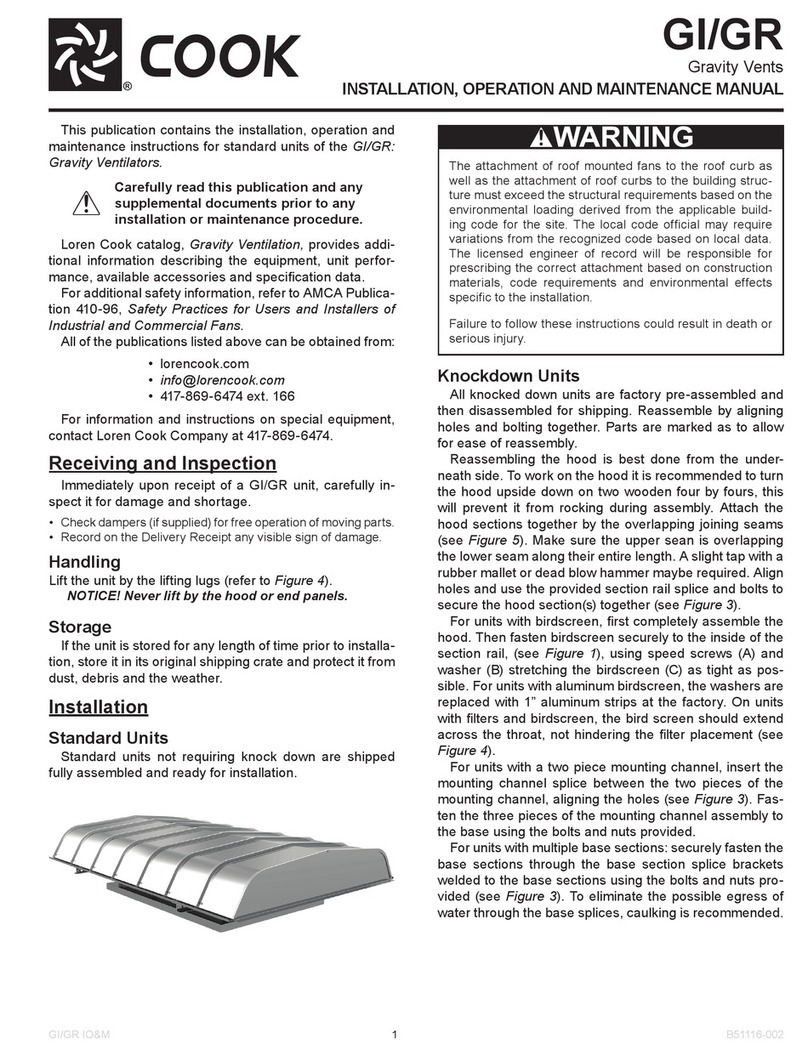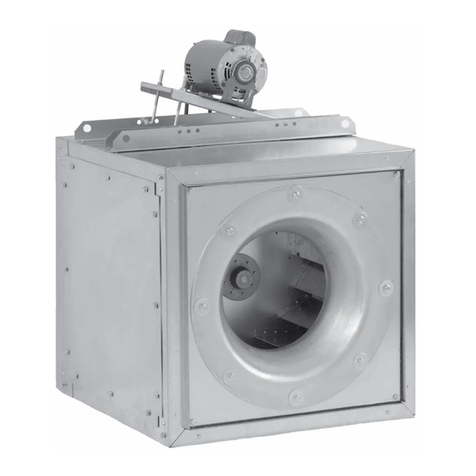
3
LO-PRO IO&M B51021-004
Final Installation Steps
1. Inspect fasteners and setscrews, particularly fan mount-
ing and bearing fasteners, and tighten according to the
recommended torque shown in the table below, Recom-
mended Torque for Setscrews/Bolts.
2. Inspect for correct amperage and voltage with an amme-
ter and voltmeter.
3. Ensure all accessories are installed.
4. Check wheel-to-inlet clearance on power roof fans.
5. Test the fan to be sure the rotation is the same as indicat-
ed by the arrow marked “Rotation.”
Fan Installation
Place fan over roof opening. Secure the fan with lag
screws, anchor bolts, or other suitable fasteners.
Operation
Pre-Start Checks
1. Lock out all the primary and secondary power sources.
2. Inspect fasteners and setscrews, particularly those used
for mounting the fan, and tighten if necessary.
3. Inspect belt tension and pulley alignment. (Remember, if
belt tension is correct, a loud squeal occurs as the fan in-
creases to full power.)
4. Inspect motor wiring.
5. Ensure the belt touches only the pulleys.
6. Ensure fan and ductwork are clean and free of debris.
7. Test the fan to ensure the rotation of the wheel is the same
as indicated by the rotation label.
8. Close and secure all access doors.
9. Restore power to unit.
Recommended Torque for Setscrews/Bolts (IN-LB)
Setscrews Hold Down Bolts
Size
Key Hex
Across
Flats
Recommended
Torque Size Recommended
Torque
Min. Max.
#8 5/64” 15 21 3/8”-16 324
#10 3/32” 27 33 1/2”-13 780
1/4 1/8“ 70 80 5/8 ”-11 1440
5/16 5/32” 140 160 3/4”-10 2400
3/8 3/16” 250 290 7/8”-9 1920
7/16 7/32” 355 405 1”-8 2700
1/2 1/4“ 560 640 1-1/8”-7 4200
5/8 5/16” 1120 1280 1-1/4”-7 6000
3/4 3/8” 1680 1920 - -
7/8 1/2” 4200 4800 - -
19/16” 5600 6400 - -
Start-Up
Turn the fan on. In variable speed units, set the fan to its
lowest speed. Inspect for the following:
• Direction of rotation
• Excessive vibration
• Unusual noise
• Bearing noise
• Improper belt alignment or tension (listen for a continuous
squealing noise)
• Improper motor amperage or voltage
If a problem is discovered, immediately shut o the
fan. Lock out all electrical power and check for the
cause of the trouble. Refer to Troubleshooting, page 7.
Inspection
Inspection of the fan should be conducted at the rst 30
minute, 8 hour and 24 hour intervals of satisfactory opera-
tion. During the inspections, stop the fan and inspect as per
the chart below.
30 Minute Interval
Inspect bolts, setscrews, and motor mounting bolts. Adjust
and tighten as necessary.
8 Hour Interval
Inspect belt alignment and tension. Adjust and tighten as
necessary.
24 Hour Interval
Inspect belt tension. Adjust and tighten as necessary.
Maintenance
Establish a schedule for inspecting all parts of the fan. The
frequency of inspection depends on the operating conditions
and location of the fan.
Inspect fans exhausting corrosive or contaminated air within
the rst month of operation. Fans exhausting contaminated air
(airborne abrasives) should be inspected every three months.
Clean the wheel and air inlets if mate-rial build-up is exces-
sive. Excessive build-up can cause imbalance and failure of
the wheel.
Regular inspections are recommended for fans exhausting
non-contaminated air.
Regular inspections of the Grease Terminator 2 are recom-
mended. Depending on the amount of grease dis-charged
through the fan, the Terminator 2 should be changed every 30
to 45 days to ensure proper operation. Any buildup of grease
is easily seen during a visual inspection of the clear canister.
However, if the Terminator 2 becomes saturated, grease will
no longer be absorbed.
It is recommended the following inspections be con-
ducted twice per year:
• Inspect bolts and setscrews for tightness. Tighten as
necessary. Refer to Torque chart
• Inspect belt wear and alignment. Replace worn belts with
new belts and adjust alignment as needed. Refer to Belt and
Pulley Installation, page 2
• Bearings should be inspected as recommended in the
Conditions Chart, page 4
• Inspect for cleanliness. Clean exterior surfaces only.
Removing dust and grease on motor housing assures
proper motor cooling
Fan Bearings
The fan bearings are provided prelubricated. Any special-
ized lubrication instructions on fan labels supersedes informa-
tion provided herein. Bearing grease is a petroleum lubricant
in a lithium base conforming to an NLGI #2 consistency. If
user desires to utilize another type of lubricant, they take re-
sponsibility for ushing bearings and lines, and maintaining a
lubricant that is compatible with the installation.
An NLGI #2 grease is a light viscosity, low-torque, rust-in-
hibiting lubricant that is water resistant. Its temperature range
is from -30°F to 200°F and capable of intermittent highs of
25 0°F.
Bearings should be relubricated in accordance with the con-
dition chart below.






